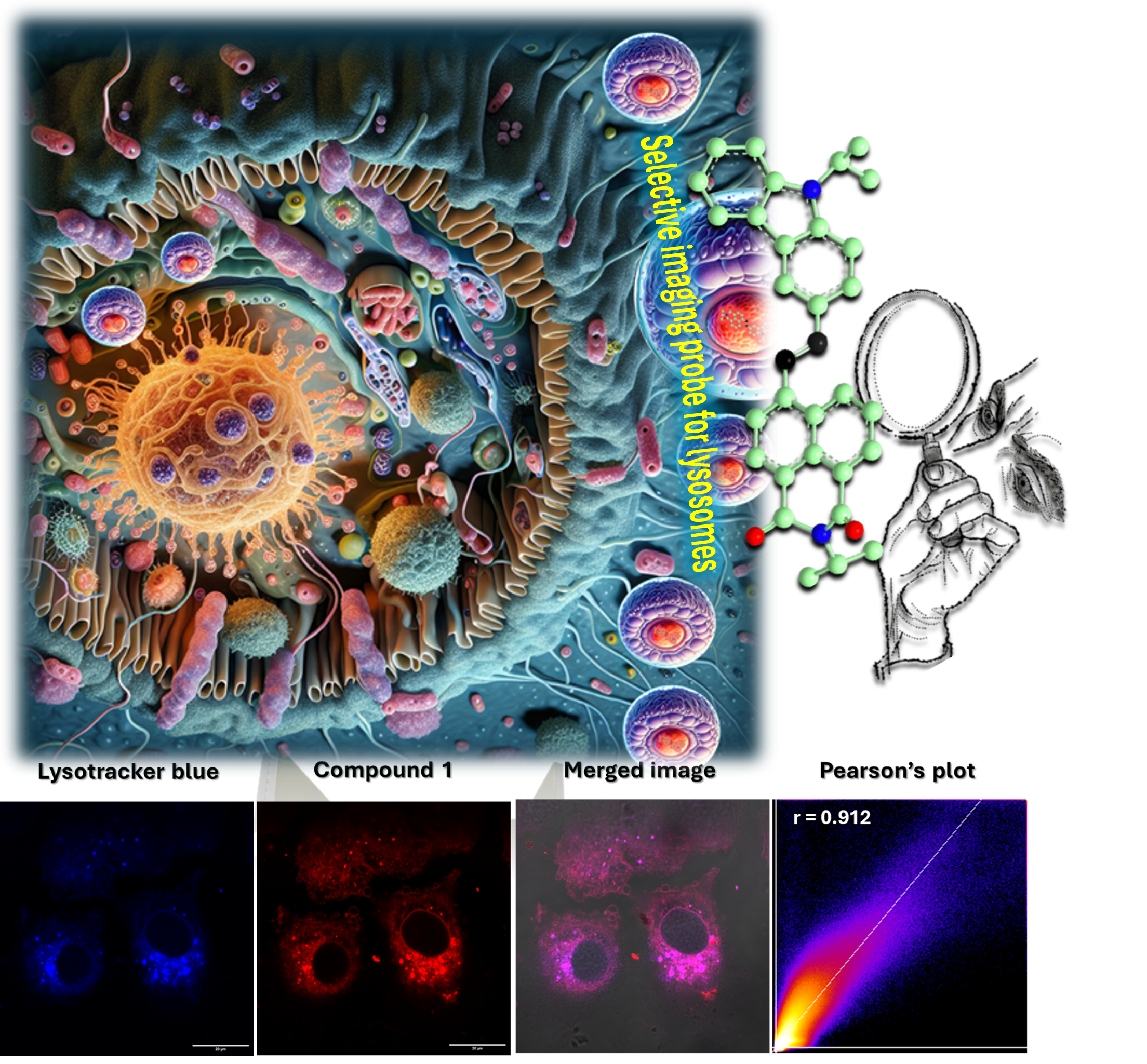Lysosome imaging with new fluorescent probes
– Chandana Valaboju

Lysosomes are among the most important cell organelles because they break down worn out cell materials, carry out programmed cell death, and digest invading pathogens. A variety of disorders can occur if lysosomes do not function properly. Hence, visualising these organelles to understand their functioning is important.
One way to visualise lysosomes is fluorescence imaging, which can capture biological structures and processes with high specificity and resolution. However, most fluorescent agents are inorganic and toxic to the cell. On the other hand, organic dyes that are less toxic also emit less light when they are clumped together – which is the state that they usually assume in the cell.
To address this problem, researchers led by P Thilagar at the Department of Inorganic and Physical Chemistry, along with researchers from the University of Trieste, have synthesised two new compounds made of organic constituents called Napthalimide and Carbazole. These compounds have tunable light emission properties. The alkaline nature of these molecules allows them to bind strongly to the acidic vesicular envelope of lysosomes.
The researchers found that the compounds could emit light across a broad range of wavelengths, from green to far red, in both isolated (in water) and aggregated states (inside cells). Their toxicity was found to be low compared to conventional organic dyes. One of the two molecules in particular displayed excellent biocompatibility and lysosome selectivity. The molecules were also able to emit light under mechanical stress.
Such compounds can help scientists better understand lysosome function and dysfunction, without causing damage to the cell.
REFERENCE:
A Munthasir, P Rani, D Pandi, S Geremia, N Hickey and P Thilagar, Napthalimide and Carbazole Based Mechanochromic Molecular Dyads and Triads for Selective Lysosome Imaging, Chemistry (2025).
https://doi.org/10.1002/asia.202401386
LAB WEBSITE:
https://ptlabiisc0.wixsite.com/website




